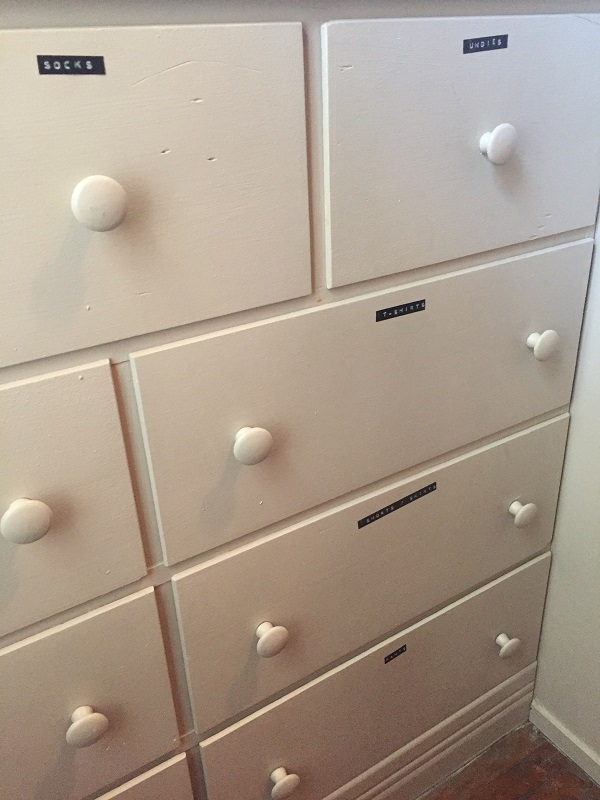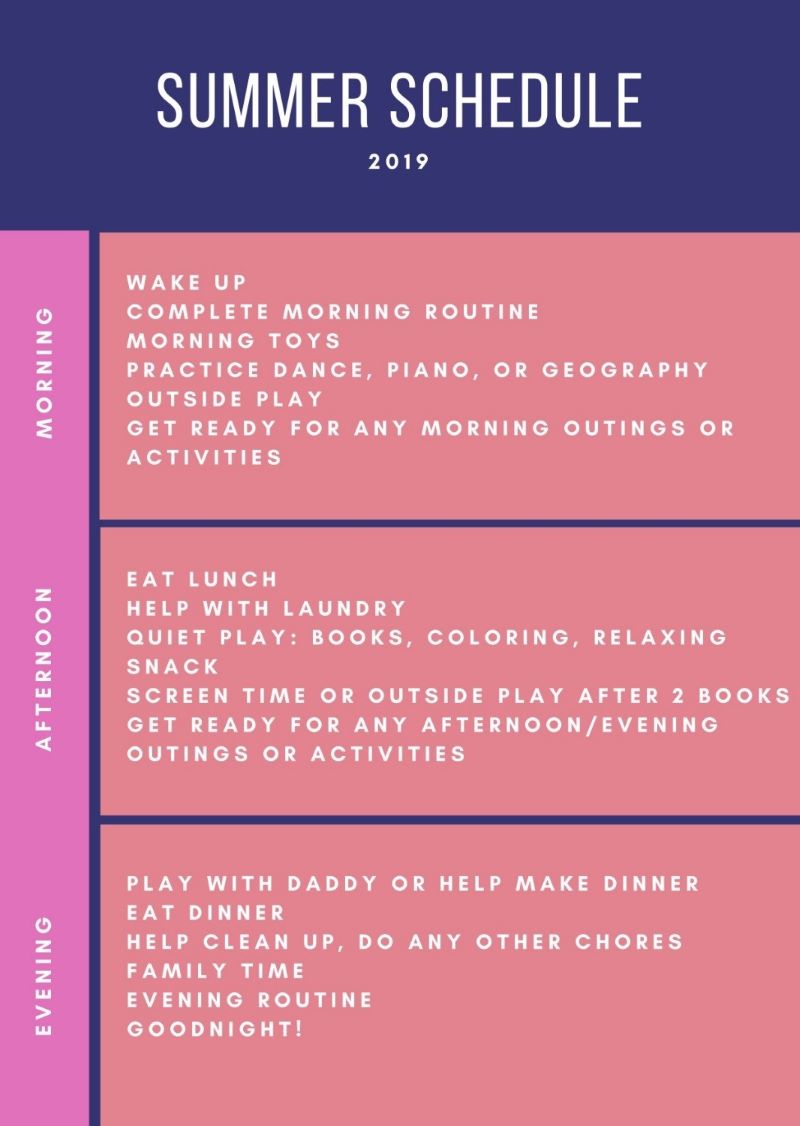
Learn how to create a Summer Schedule that kids (and parents) will enjoy!
My daughter just finished a successful year of kindergarten. My husband and I both firmly believed that having good routines in place at home helped contribute to a great first year of “big school” for our kiddo.
However, once the last day of school hit, my 6-year-old figured she didn’t need her at-home schedule anymore and stated (a bit too confidently), “It’s summer, so I get to stay up late and watch movies tonight!” Imagine her surprise when my husband and I replied, practically in unison, “Ummm, no…that’s not how summer works.”
We knew immediately that we needed a summer schedule to help guide our daughter’s school-less days. We wanted to create something flexible (because summer IS a time for exploration), but still structured because our kiddo thrives when she knows what’s coming next.
As an education writer and consultant, I typically only work a couple days per week in the summer, and our daughter hangs out with grandparents on the days that I’m in the office. Therefore, it was important that our schedule easily transfer to their homes as well. But it took some intentional planning and lots of conversation before we arrived at something that felt right for us. Here’s how we created our custom schedule broken down into 5 easy steps!
Assessing Interests
The first step was sitting down to ask our daughter questions about the school year and her current interests. Was there a subject she wanted to learn more about? Was there something new, like a sport or hobby, she wanted to try this summer? From asking these questions, we discovered that she developed a deep interest in geography over the school year and wanted to have time to practice drawing maps over the summer. She also told us she still loved ballet and wanted to keep her skills fresh by having time to dance each day. And she also indicated that she was interested in starting piano lessons. By just asking a few questions, we got so much information on how our daughter wanted to spend her summer, instead of us arbitrarily trying to fill it with activities that she wasn’t interested in. It also helped us understand what materials to have on hand to help her do what she loves, like maps, geography games and puzzles, pencils, tracing paper, dance games, and even a roll-up keyboard for her to practice between lessons.
Addressing Necessary Tasks and Helpfulness
Even though our daughter wouldn’t need to hurry out of bed for school, we still wanted her to get ready each morning (and not stay in her pajamas until 11am…because she totally would!). We put a pocket chart in her room listing her morning tasks: make bed, get dressed, brush hair, eat breakfast, feed the cat, brush teeth. Similarly, this chart also lists her before-bed tasks: bath, pajamas, brush hair, brush teeth, read books, lights out.

We also wanted her to know that she was expected to be helpful at home throughout the day. After a few conversations, we decided she could now be more helpful with laundry, specifically folding and putting away her own clothes. Then we made labels for the outside of her drawers using a simple tape label maker so she could remember where everything goes. You can also use cardstock and self-adhesive pockets for the labels.

Eliminating the Overwhelm
After just a few days into summer break, I noticed that my daughter gets overwhelmed by having too many options. If I told her to pick out a toy, game, or craft, she found it very hard to choose the “right” one. This often led to her getting pretty frustrated to the point where she didn’t want to play or create at all!
But my husband came up with a great idea. Now, every morning before he goes to work, he picks out three toys or activities and puts them on the dining room table. Those are what our daughter can pick from to play with in the morning after breakfast.
We call these “Morning Toys,” but she actually comes back to them throughout the day. Items that have made their way into “Morning Toy” circulation include sticker books, magnet dolls, a marble run set, slime, clay, and crayons and coloring books. This technique has really helped us manage her overwhelm and it makes her feel so special knowing that her dad was thinking of her that morning. She can’t wait to call and tell him what she chose to play with first!
Managing Screen Time
We knew we had an uphill battle when our daughter announced that summer, to her, meant staying up late and watching movies! We always allowed for some screen time each day after school, so I’m guessing she thought summer would be a TV free-for-all.
We decided to work screen time into our summer schedule by allowing her a specific time of day (afternoons after her snack) to choose something to watch, but only if she read at least two books already. If not, she had to head to the bookshelf before picking up the remote!
Putting it All Together

Only after assessing our daughter’s interests, identifying our own expectations, and finding ways to help her manage her time did we create our family’s summer schedule. For us, we didn’t want to put specific time frames on activities (because we did want some flexibility); instead we inserted activities into MORNING, AFTERNOON, and EVENING categories. Here’s what we came up with:
We wanted the categories to serve more as suggestions rather than hard and fast rules, so you’ll notice that there are spots where we leave time to participate in outings and activities (like lessons, going to the park, or meeting up with friends). If we don’t have anything planned outside of the house for the day, our daughter can choose to spend more time with her “Morning Toys,” dance, play outside, read, or relax. We also wanted the schedule to be easy to replicate at a grandparents’ house (where she spends late mornings and afternoons twice per week), so there’s nothing on the schedule that can’t be done there.
Once we finalized it, we printed copies for us and her grandparents, put them in protective laminating sheets, stuck our copy on the refrigerator, and encouraged the grandparents to do the same. And, while every day hasn’t looked exactly like this, it’s nice to know that we have a framework for our summer that we all worked on creating together.
There are so many ways to craft a summer schedule that’s right for your family, and it doesn’t have to look like this one at all! Just take the time to plan what’s right for you and your kiddos. Ask questions, assess interests, and really dig down to discover what’s important to your family this summer. And when you work on it together, it will become important and special to all of you! How do you plan to structure the summer months at home? Let us know in the comments below!
Author: Lindsay Bayer, M.Ed.







